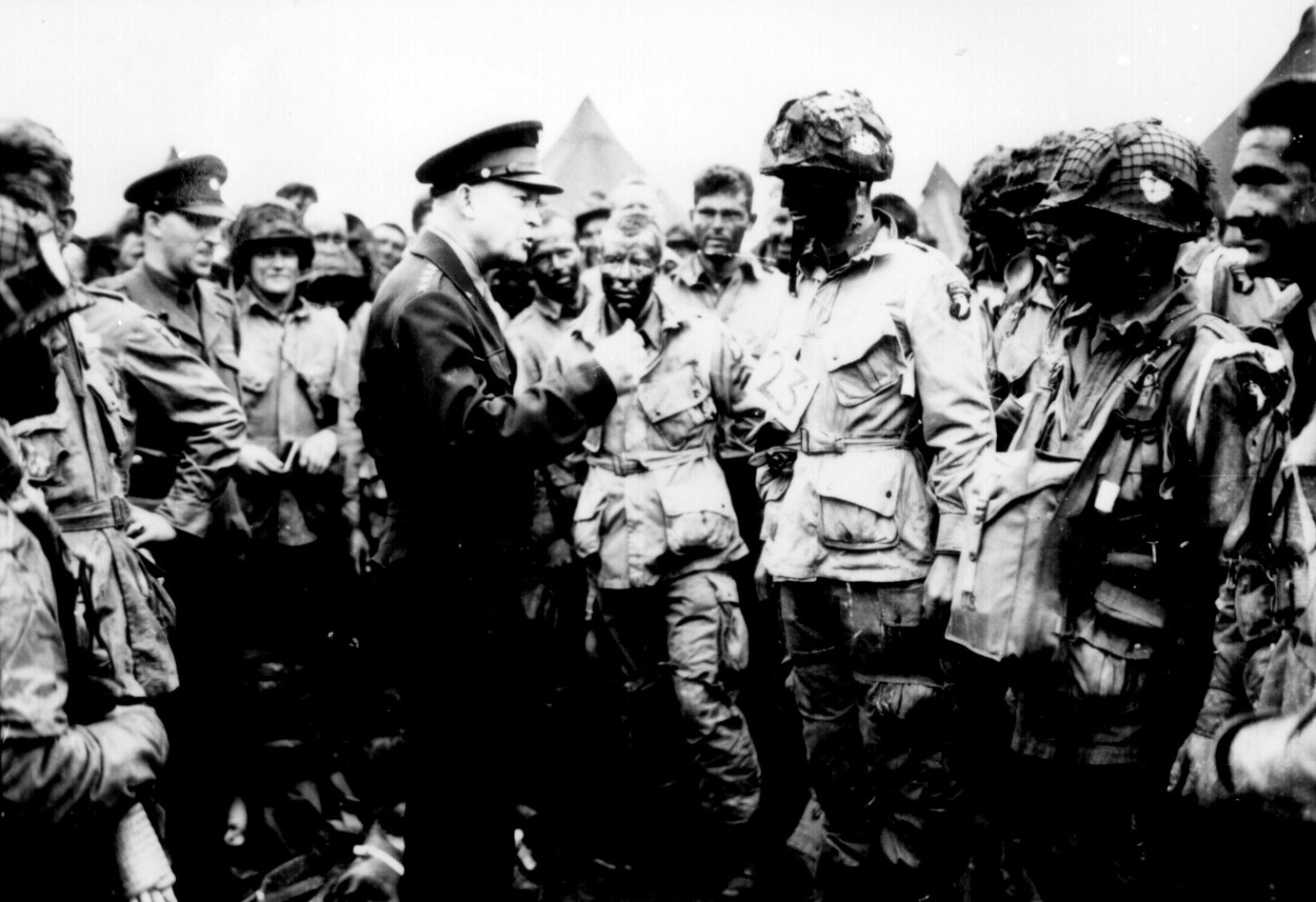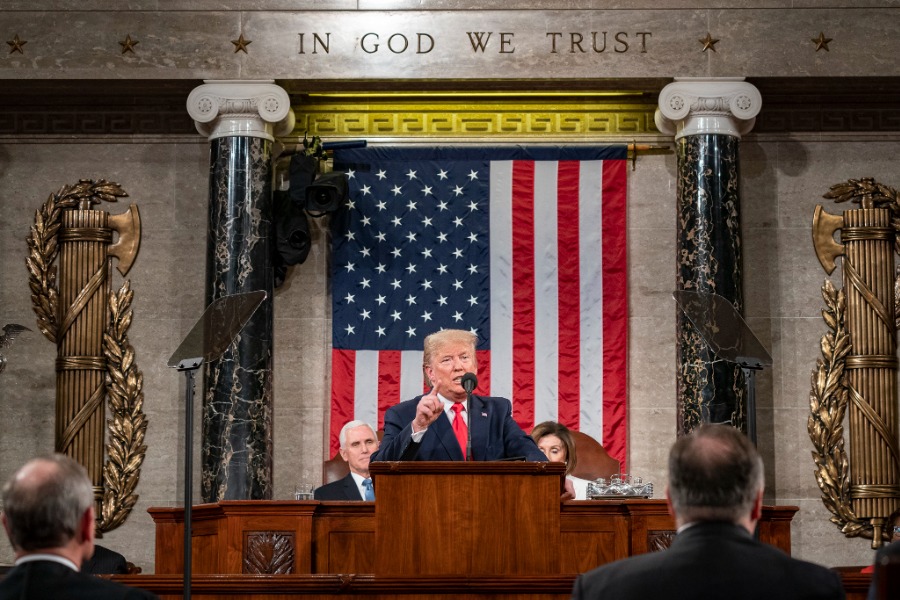Eisenhower and War Powers
Eisenhower never initiated a major armed conflict. Still, his administration offers critical insight for modern war powers questions.

Published by The Lawfare Institute
in Cooperation With

This week’s opening of the Eisenhower Memorial in Washington, D.C., has prompted a lot of excellent commentary on the Eisenhower presidency. Last year I wrote a trio of Lawfare posts on Eisenhower and constitutional war powers (inspired and aided by some terrific new histories), so I want to use the opening of the memorial as an occasion to tie those pieces together.
The Eisenhower administration is understudied in the legal history of war powers. Why? The main reason is probably that Eisenhower didn’t initiate any major wars. His administration was sandwiched between two big ones, the Korean War and the Vietnam War, that get lots of attention from lawyers and legal historians. As I’ve argued elsewhere, the standard history of war powers tends to emphasize, understandably but mistakenly, actual wars. I say “understandably” because lawyers tend to focus on actions and the argumentation and legal judgments arising from them; so, lawyers use military conflicts as their main data points to examine law and war. Nonevents attract less legal attention. I say “mistakenly” because one of the most important ways the United States has wielded military power, especially in the Cold War, was to deter war and use military power in other ways to avert war. A major concern among the Founders in engineering war powers was to stay out of wars, and constitutional law has remained very relevant to the United States’s strategy for doing so—in different ways over time, and with varying success.
The Eisenhower administration is an intriguing episode of the war powers story precisely because it did not involve major wars, and Eisenhower thought a lot about the relationship between strategy and the Constitution.
In a first post, I wrote about Eisenhower’s Formosa force authorization. To vigorously prosecute the Cold War while taming defense spending, Eisenhower relied on the deterrent effect of the threat of massive U.S. retaliation—including nuclear weapons—against communist aggression. This approach was put to the test when Communist China shelled tiny coastal islands that were under control of U.S.-allied Nationalist China. Eisenhower went to Congress to give advance approval for military force should it be needed. By nearly unanimous votes in both houses, Congress authorized the president in January 1955 “to employ the Armed Forces of the United States as he deems necessary for the specific purpose of securing and protecting Formosa, and the Pescadores against armed attack,” including “the taking of such other measures as he judges to be required or appropriate in assuring the defense of Formosa and the Pescadores.” Cooler heads prevailed, but this was a force authorization by Congress that could very well have included nuclear strikes.
In a second post, I wrote about Eisenhower’s Middle East force resolution. In 1957, Eisenhower requested congressional support for a program of military and economic aid for Middle East countries. Anticipating the possibility of communist aggression in the region, he also asked Congress for an authorization to use military force to protect those countries. Congress obliged, but only after considerable debate. This time the congressional resolution—which again might possibly have included nuclear escalation—used the words “the United States is prepared to use armed forces” rather than “authorizing” the president to use force. That move allowed lawmakers to paper over a debate about what congressional force authorization implied about the president’s power.
A few aspects common to both of those resolutions are especially noteworthy. First, Eisenhower wanted them as instruments of deterrence, not because he expected to intervene. Today we usually think of congressional force authorizations as legislative backing for military intervention that is planned or even underway. Eisenhower thought these resolutions made intervention less likely, not more, because he saw them strengthening the credibility of deterrent threats. These force resolutions were more about signaling than warfighting. They were worded very broadly but didn’t need to be acted upon.
Second, during this period when the political branches were adjusting to the permanent emergency of the Cold War and to newfound global security responsibilities, Congress pushed back against Eisenhower’s force resolution overtures on several different constitutional grounds. Some powerful members of Congress saw such resolutions, which anticipated future crises, as improper, open-ended delegations. Other members had completely different concerns: that congressional action of this sort might dangerously imply that the president lacked vast unilateral power. Congress shirking responsibility for war is common throughout American history, but this was a moment of especially great ferment in constitutional arguments on Capitol Hill over war powers for a new strategic era.
Third, although Eisenhower is rightly remembered for his initial commitment to Congress’s powers to control initiation of major war, he still carved out space for himself to act unilaterally if absolutely necessary. Eisenhower’s early-term respect of congressional war powers was shaped by his faith in Congress’s prerogatives as a matter of principle, but also his experience watching the Korean War, waged without congressional authorization, nearly ruin President Truman. Yet he also believed that the president had certain emergency military powers to protect the nation, and where Eisenhower drew those lines was never clear. Moreover, Eisenhower believed that the president had broad power to engage in covert warfare without specific congressional approval. In another post, I wrote about how, alongside Eisenhower’s general solicitude toward Congress on major-war initiation, he did more than any other president to institutionalize CIA covert warfare as an instrument of national power with (at that time) little congressional oversight, let alone control.
But still, given how much geopolitics and law in this area have evolved in the past 70 years, one might ask whether it’s worth studying Eisenhower and war powers.
It’s worth devoting attention to Eisenhower in part to better measure how well war powers “worked.” As is true for many war powers narratives, it is easy to associate the presidential unilateralism of Korea and the open-ended congressional force authorization of Vietnam with costly military misadventure and presidential ruin. The Eisenhower years had their own blunders, but they had no major wars—and this was a time when escalation could have spiraled cataclysmically and the postwar international security architecture was still being set. This is not to say that constitutional arrangements or interpretations were responsible for that outcome, but they were a piece of the story.
The Eisenhower chapter of the war powers story also spotlights an executive branch and Congress wrestling with questions about war powers and credible signaling that to this day remain poorly understood. Political scientists continue to refine our understanding of credible threats and perceptions of resolve, including the relative advantages of democracies in conveying them. And although congressional politics often features heavily in scholarship about threats of force, formal legislative processes do not. Meanwhile, lawyers and partisans in debates about Congress’s formal role in approving military force often make blanket arguments about war powers and credibility—claims that, for example, congressional approval requirements undermine American credibility abroad or that congressional force authorizations enhance adversaries’ perceptions of American resolve—with little empirical evidence to back them up.
Eisenhower’s internal deliberations and discussions with Congress do not yield definite answers to that complicated set of questions. But at least the debates of the Eisenhower years were serious efforts to understand how constitutional processes and legal moves might be perceived by adversaries and allies, taking account of the specific geostrategic and domestic political contexts. Those are important questions to be probing now, too, when the United States faces a wide and varied array of security threats and domestic politics is challenging its military commitments abroad.





